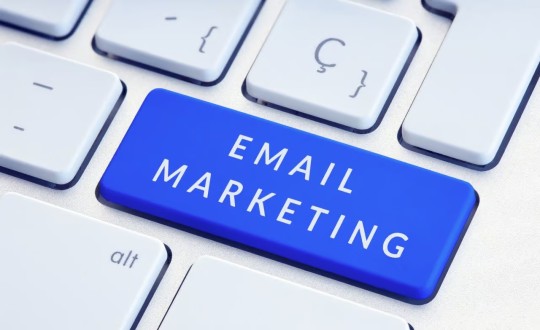
In a world filled with digital noise, email marketing remains one of the most genuine and effective ways to reach your audience. It’s not just about promoting a product—it’s about starting meaningful conversations that build relationships and long-term loyalty. While social media and paid ads often steal the spotlight, email continues to deliver consistent results when used with strategy and intention.
Why Email Marketing Still Works
Many people think of email marketing as outdated, but it’s actually one of the most reliable marketing tools available today. Unlike social platforms, where algorithms can change overnight, email gives you direct access to your audience. Every message you send lands right in their inbox—no gatekeepers, no distractions.
What makes it powerful is personalization. When your emails feel human and relevant, people are more likely to read, click, and respond. It’s not about sending as many messages as possible; it’s about sending the right message at the right time.
The Foundation of Effective Email Marketing
Before launching a campaign, you need to build a strong foundation. A well-organized system makes your communication smooth and meaningful. Here’s what every successful email strategy includes:
- Segmentation: Divide your audience into groups based on their interests or behavior. For example, new subscribers may need welcome content, while returning customers may appreciate exclusive updates.
- Brand Voice: Your emails should sound like you. Consistency in tone builds recognition and trust.
- Scheduling: Timing matters. Create a calendar that helps you stay connected regularly without overwhelming your readers.
From Promotions to Conversations
One of the biggest mistakes in email marketing is focusing only on sales. People don’t want constant promotions; they want useful, engaging content. Think of your emails as a two-way conversation. Share insights, tell stories, and offer value that helps your readers solve problems or learn something new.
By offering value first, your audience begins to view your emails as helpful rather than intrusive. Over time, this builds credibility and encourages natural engagement.
Storytelling in Email Marketing
Great emails tell stories that resonate emotionally. Whether it’s a customer success story or the journey behind your latest product, stories make your brand human. They give readers a reason to care, and that connection often leads to deeper trust.
Each email should have a purpose—whether it’s inspiring action, educating, or simply strengthening a relationship. The goal is to make your audience look forward to what comes next.
Benefits of Consistent Email Marketing
Consistency is what transforms casual subscribers into loyal readers. By maintaining a steady flow of valuable communication, you stay top-of-mind and create a sense of familiarity with your audience.
When done right, consistent email marketing can:
- Keep your brand visible and relevant
- Encourage more website visits
- Build anticipation for new launches or offers
- Turn one-time buyers into repeat customers
- Strengthen relationships with long-term clients
The Three Pillars: Timing, Targeting, and Trust
Every successful campaign is built on three key elements—timing, targeting, and trust.
- Timing: Sending emails at the right moment increases open rates and engagement.
- Targeting: The more precise your segmentation, the more your messages resonate.
- Trust: Authenticity is the heart of effective communication. Always deliver value and respect your readers’ attention.
When these three pillars work together, your audience feels understood and appreciated—two feelings that drive loyalty.
How Email Strengthens Every Marketing Channel
Email marketing doesn’t operate in isolation—it enhances your entire marketing ecosystem. It supports social media, paid ads, and even offline strategies by keeping your audience informed and engaged.
For example, nurturing leads through email helps prepare them for sales conversations. Similarly, subscribers who enjoy your content are more likely to interact with your brand across other platforms.
You can also use email for:
- Lead Nurturing Sequences: Guide potential customers toward taking action.
- Onboarding Campaigns: Introduce new users to your products or services.
- Re-Engagement Messages: Reconnect with subscribers who’ve been inactive for a while.
The Evolution of Email Marketing
Modern email marketing has evolved beyond one-size-fits-all newsletters. Today’s tools allow you to create dynamic messages that adapt to each subscriber’s behavior. This personalization creates a more human and engaging experience.
From automated workflows to smart segmentation, email marketing continues to innovate—making it easier than ever to stay connected in meaningful ways.
Measuring What Matters
The best way to grow is to measure your results. Track open rates, clicks, and responses to see what works. Don’t just focus on numbers—look at patterns and feedback. This helps refine your approach and ensures each campaign performs better than the last.
Understanding data gives you insight into your audience’s preferences, helping you tailor your messages to what truly resonates.
Why Every Business Should Invest in Email Marketing
Email marketing is not just for big brands—it’s for every business that values relationships over quick sales. Whether you’re a startup, freelancer, or established company, a thoughtful email strategy helps you connect authentically with your audience.
It’s a long-term investment in trust and communication—one that pays off by building a loyal, engaged community that supports your growth.
FAQs
How can small businesses get started with email marketing?
Start by building an email list of your existing customers and website visitors. Use simple tools to send updates and share helpful content regularly.
What kind of content should I include in my emails?
Mix educational, inspirational, and informative content. Avoid focusing only on sales; instead, provide real value to your readers.
How do I know if my emails are effective?
Check open and click-through rates to measure engagement. Over time, monitor conversions and audience feedback to adjust your strategy.
What’s the best time to send emails?
It depends on your audience. Generally, mid-mornings during weekdays perform well, but testing different times will give you the best answer.
Can I automate my email campaigns?
Yes. Automation helps you send the right messages at the right time—like welcome emails or reminders—without doing it manually each time.

